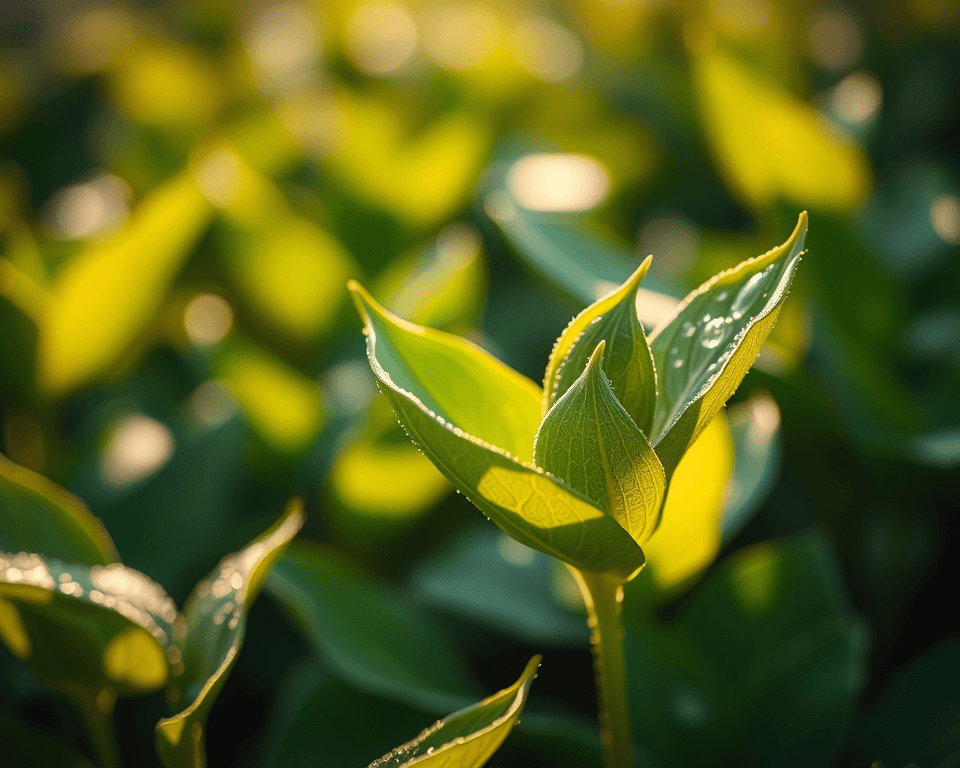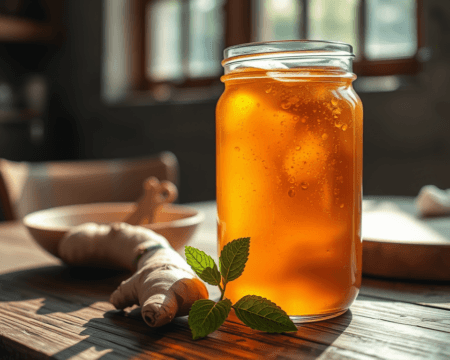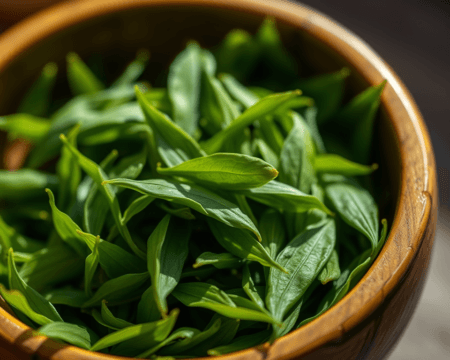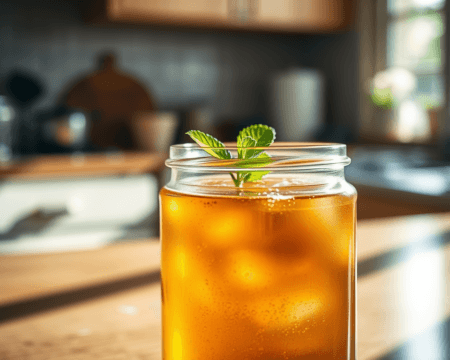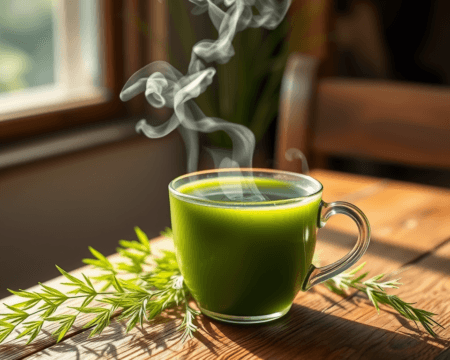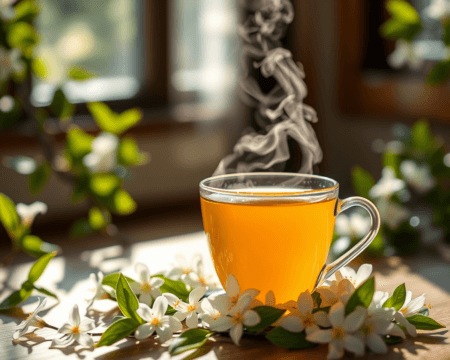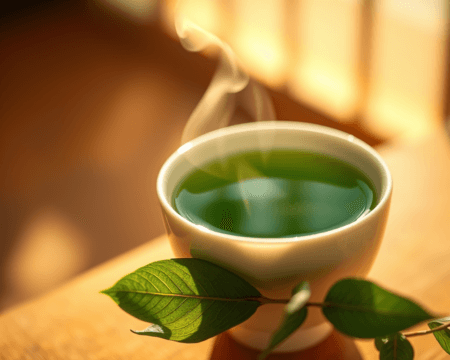Got a hankering for fresh, aromatic tea, right from your backyard? Well, you’re in luck! Growing tea in the U.S. is not just a distant dream reserved for lush Asian hills. I’m here to guide you on whether you can cultivate this beloved beverage where you live, and how to do it expertly. Stick around if you’re ready for a thrilling journey into the world of tea cultivation!
Key Takeaways
- Climate and Soil Matter: Understanding your local climate and soil quality is crucial for successful tea cultivation.
- Best U.S. Regions: Some regions, especially in the Southeast and California, offer ideal conditions for growing tea.
- Choosing Varieties: Varietals like Camellia sinensis thrive in U.S. climates—pick the right ones for your space!
- Tackle Challenges: With the right strategies, you can overcome climate challenges and pests.
- Sourcing: Finding the right nurseries and suppliers is key to starting your tea garden off strong.
Understanding the Climate and Soil Requirements for Tea Cultivation
Let’s get right into it. The key players in your tea-growing game are climate and soil. If you’re missing out on either, you’re in for a bumpy ride.
Ideal Climate Zones for Tea Growing
First thing’s first, tea loves a good climate. You want to be looking into the USDA Hardiness Zones 7-10. Think warm and humid!
- Temperature Range: Aim for 60°F to 85°F during the growing season.
- Humidity Levels: Tea plants thrive in humidity of around 50% to 80%. Don’t forget about consistent rainfall, around 40 to 80 inches a year is golden.
Check your local conditions. Areas in the Southeast U.S., California, and even parts of the Pacific Northwest can be winners if they fit the bill. Remember, optimal conditions and environmental compatibility are key to robust tea plant growth.
Soil Characteristics for Successful Tea Growth
Now, let’s dig into the dirt—literally. A tea plant’s best friend is nutrient-rich, well-draining soil.
- Soil pH: You want to keep it between 5.5 and 6.5. Too alkaline? Forget it.
- Drainage and Moisture Retention: Tea roots don’t like to sit in water, so ensure you’ve got great drainage combined with moisture retention. Working in some organic matter like compost can work wonders.
Take time to prepare your soil using the right cultivation techniques—this is where your plants will start their journey to becoming tea champions.
Best Regions in the U.S. for Growing Tea
So, where do you even start? Let’s break down the best states and how their microclimates can impact your tea-growing experience.
Top States for Tea Cultivation
If you’re in or near one of these locations, you’re on the path to tea success:
- South Carolina: Look no further! This state has a burgeoning tea culture, with places like the Charleston Tea Garden producing Camellia sinensis like pros.
- California: With its diverse climate, California’s coastal and mountainous areas create perfect pockets for growing. The lush grasslands here meet all the requirements!
- Southeast U.S.: States like North Carolina and Georgia can also provide a decent backdrop with subtropical climates.
Get familiar with your geographic region’s climate specificity to maximize agricultural potential.
Microclimates and Their Impact on Tea Growth
Now, let’s talk microclimates. Just because you live in a region that’s generally tea-friendly doesn’t mean every spot in your backyard will cut it.
Consider local factors:
– Local Climates: Elevation changes, proximity to water, and existing vegetation all affect local climate, which can optimize tea cultivation.
– Frost Avoidance: Lower areas prone to frost will require extra love and care—think about windbreaks or choosing a sheltered spot.
Learning about your specific microclimate can set you up for some big wins down the line.
Choosing the Right Tea Varieties for U.S. Conditions
Alright, you’ve got your climate and your soil sorted. Now to select what types of tea to grow.
Popular Tea Varieties Suitable for Home Gardens
When it comes to tea, Camellia sinensis is your go-to plant. This beauty produces green, black, and Oolong tea! Each varietal has distinct flavor profiles, but they all thrive in the right conditions.
- For a change of pace, consider some herbal tea alternatives like mint or chamomile. These tend to be a bit easier for first-timers.
Characteristics and Care Tips for Specific Tea Varieties
Each type has its quirks! Growing conditions vary:
– Green Tea Strains: Require a bit more attention. They thrive in slightly shaded areas to avoid scorching.
– Black Tea Strains: These are tougher and can handle a bit of heat.
Planting can be tricky, but focusing on pest resistance and maintenance needs ensures a vibrant harvest.
Practical Tips for Growing Tea Successfully
So, you’re ready to roll. Here are some practical steps to make sure you don’t just grow tea, but grow it like a pro.
Preparing Your Garden for Tea Plants
Before you put your hands in the dirt, you need a solid game plan.
Site selection is critical—it should have good sunlight and wind protection. Space your plants 3 to 4 feet apart to allow for growth. When planting, ensure you’re not burying the crown of the plant. Watering practices? Steady and consistent is the name of the game.
Think about applying mulch to retain moisture, too. It can really help in maintaining a healthy overflow of tea plants.
Common Pests and Diseases Affecting Tea Plants
Let’s get real—you’re gonna run into some nasty bugs or diseases.
Pest Management: Stay vigilant! Aphids and spider mites can wreak havoc on young plants. Introduce good bugs like ladybugs to the party. Organic treatments using neem oil can help if things get out of hand.
Disease Prevention: Always monitor moisture levels to avoid fungal diseases. And check your plants regularly for any signs of distress!
Overcoming Challenges in Tea Cultivation Across Different Climates
Facing challenges? No worries! Here’s how to roll with the punches.
Strategies for Adverse Weather Conditions
Inconsistent weather can throw a wrench in your plans. Here’s how to deal with some curveballs:
- Frost Protection: Use frost blankets or cover plants with cloth if a freeze is imminent.
- Drought Mitigation: If you’re in a drier area, consider irrigation systems. Drip lines are fantastic for maintaining moisture without overdoing it.
Putting these protective measures in place will help you cultivate resilient plants that can withstand climate challenges.
Learning from Local Cultivation Experiences
One of the best ways to grow is through community. Tap into local gardens or growers’ networks.
Share experiences, tips, and resources. Whether you’re learning from local cultivation anecdotes or attending workshops, nothing beats the power of firsthand experience.
Resources for Sourcing Tea Plants in the United States
So you’re pumped and ready to buy some plants! Here’s where to score the goods.
Nurseries and Suppliers of Tea Plants
Hunting for tea plants? Look for reputable tea nurseries. Online gardening stores can also supply the goods, but check reviews first! The Charleston Tea Garden, mentioned before, even sells plants direct to consumers—how cool is that?
Community and Online Resources for New Growers
Don’t underestimate the value of community! Join gardening forums or local clubs. Trust me, having a yard full of passionate gardeners is like gold! You will have instructional videos on hand and opportunities to exchange ideas.
Hop onto social networks to access educational resources, or check out platforms like Reddit and Facebook groups dedicated to tea cultivation.
This is your guide to growing tea in the U.S.—the land of opportunity is wide open, so go out there and start your tea garden!
Frequently Asked Questions
How much sunlight does tea require for optimal growth?
Tea plants thrive in partial to full sunlight, ideally receiving about 4 to 6 hours of direct sun daily. However, in extremely hot climates, some afternoon shade can help prevent leaf scorch.
What is the best time of year to plant tea?
The optimal time to plant tea is during the spring or fall when temperatures are mild. This allows the plants to establish their roots before the extremes of summer heat or winter cold.
Can tea plants be grown in pots?
Yes, tea plants can be successfully grown in containers, making them suitable for patios or balconies. Choose a pot with good drainage and use a well-draining soil mix, such as a blend of potting soil and perlite.
How do I protect my tea plants from pests?
To protect your tea plants, regularly inspect them for signs of pests like aphids or spider mites. Employ organic pest control methods such as insecticidal soaps or neem oil, and encourage beneficial insects like ladybugs.
What is the difference between Camellia sinensis var. sinensis and var. assamica?
Camellia sinensis var. sinensis is typically grown in cooler climates and produces a more delicate flavor, while var. assamica thrives in warmer, humid environments and yields stronger, more robust tea flavors. Choose the variety based on your local climate.
How much water do tea plants need?
Tea plants prefer consistently moist soil but should not be waterlogged. Generally, they require about an inch of water per week, but this may vary based on local weather conditions and the plant’s growth stage.
Can I grow tea in colder regions of the U.S.?
Yes, although challenging, you can grow tea in colder regions by selecting cold-hardy varietals, providing winter protection like mulch or burlap wraps, and considering a microclimate such as a south-facing slope or sheltered area.
How long does it take for tea plants to produce leaves for harvest?
Tea plants typically take about 3 to 5 years to mature enough to harvest leaves. However, younger plants can produce a small amount of leaves for personal use before this timeframe.
What are the main soil requirements for tea cultivation?
Tea plants prefer acidic, well-draining soil with a pH of 4.5 to 6.0. Conduct a soil test to ensure your soil meets these conditions, and consider amending it with organic matter or sulfur if needed.




